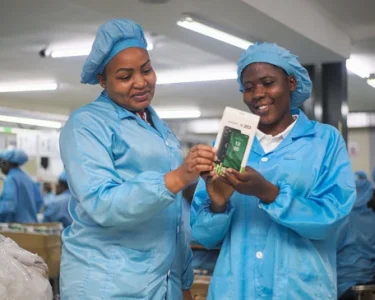After two consecutive quarters of yearly decline, Europe, Middle East, and Africa (EMEA) witnessed growth in the traditional PC market in 2Q19. This was primarily driven by the commercial segment stemming from the strong demand for PC refresh ahead of Windows 7 EOS early next year.
Meanwhile, Lenovo moved into the top position, capturing 25% of the market with more than 16.2 million units shipped. The company has won some large commercial bids, such as the ELCOT project in India, which helped drive shipments.
Preliminary results for the global traditional PC market, inclusive of desktops, notebooks, and workstations, totalled 64.9 million units in the second quarter of 2019 (2Q19).
According to International Data Corporation (IDC) Worldwide Quarterly Personal Computing Device Tracker, despite the on-going shift towards mobility adoption, a strong performance from desktops supported the overall results of the quarter.
For device market HP ranked second with 3.2% year-over-year growth. EMEA, the United States, and Japan were the company’s strongest performing markets as HP experienced positive growth in each region.
Dell Technologies maintained the third position with healthy 3.1% growth during the quarter. Desktops once again proved to be Dell’s strong suit as the company managed to raise its share in the desktop market by 1 percentage point.
Acer Group was one of the few companies that saw a decline this quarter despite having shipped additional units ahead of potential tariffs. The company continues to perform well in the value segment of the market and regions such as North America and Japan remained strongholds.
Apple rounded out the top 5, shipping nearly 4.1 million units. Like other companies, Apple managed to move additional units into the channels to fend off potential tariffs. Additionally, the recent launch of new notebooks leaves the company in a position with plenty of inventory on-hand.
The yearly growth during the quarter reached 4.7%, which was notably higher than expected as the easing of supply shortages combined with looming trade tensions to propel the market forward.
“Supply for Intel’s processors improved markedly during the quarter, allowing most PC vendors to fulfil old orders while also shipping a healthy supply of new PCs into the channels,” said Jitesh Ubrani, research manager for IDC’s Mobile Device Trackers.
“Additionally, the threat of increased tariffs led some PC makers to ship a surplus of desktops and notebooks, thereby artificially propping up the PC market during the second quarter”, he said.
“With the January 2020 end of service (EOS) date for Windows 7 approaching, the market has entered the last leg of the Windows 7 to Windows 10 commercial migrations,” noted Linn Huang, research vice president, Devices & Displays.
“However, the closing sprint is unlikely to generate the spike seen when Windows XP met its EOS because we are further ahead of the migration with two quarters to go. Still, organizations looking to finish their migration will create new opportunities for the market in the coming quarters.”
After a sluggish start to the year, the traditional PC market in the United States seems to be back on track, recording high single-digit growth in the second quarter backed by volume increases in both desktops and notebooks.
The improved sell-in was the result of multiple factors, including vendors filling in inventory ahead of back-to-school season, corporations refreshing systems ahead of the Windows 7 EOS deadline, and an overall strong inventory pull-in as the threat of additional tariffs on U.S. consumer goods remains high.
Barbra Nasimuyi, Nairobi




